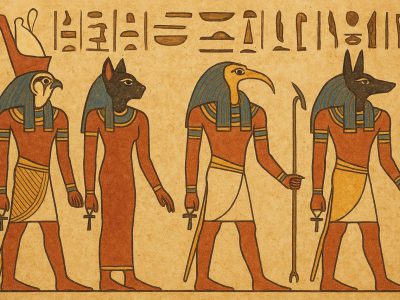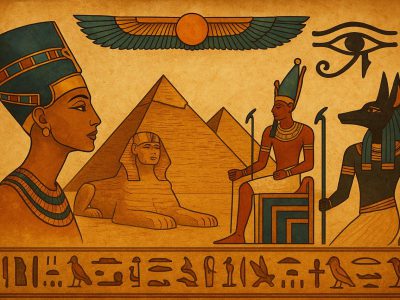This course aims to provide participants with an in-depth understanding of the history of Islamic civilization in Egypt and the development of Islamic architectural arts through the study of key historical periods and significant architectural landmarks that characterized the Islamic eras in Egypt.
The course seeks to deepen the understanding of the features and aesthetic elements of Islamic architecture, analyze prominent Islamic architectural models, and explore the connection between political, religious, and social circumstances and the evolution of Islamic architecture. Additionally, it aims to equip participants with the knowledge and skills needed to apply their learning in the fields of tourism and heritage
By the end of the course , the learner will be able to:
– Utilizing the acquired knowledge in tourism, academic, or cultural fields in a professional and in-depth manner.
– Distinguishing the various Islamic architectural styles across different Islamic eras.
– Understanding the historical sequence of Islamic civilization and linking it to the political and cultural context of each period.
– Providing comprehensive and accurate scientific explanations during tours of major historical and archaeological sites across Egypt.
– Acquiring accurate historical and architectural information necessary to apply for a license to practice the profession of tour guiding.
Course Features
- Lectures 27
- Quiz 0
- Duration 1680:00:00
- Course Duration 09:03:00
- Skill level All levels
- Language العربية
- Students 1
- Assessments Yes
Curriculumm
- 7 Sections
- 27 Lessons
- 10 Weeks
- Module 1: The Early Period of Islamic History and Architecture7
- 1.1The arrival of Islam in Egypt by Amr ibn al-As
- 1.2The Mosque of Amr ibn al-As – the first mosque established in Egypt
- 1.3Egypt under the rule of the Umayyad Caliphate
- 1.4The Abbasid Caliphate – the longest-ruling period in Islamic history
- 1.5The Nilometer on Rawda Island – a model of Islamic hydraulic structures
- 1.6The Tulunid Dynasty – the first independent Islamic state in Egypt
- 1.7The Mosque of Ahmad ibn Tulun – the oldest surviving mosque in Egypt
- Module 2: The Shi’a Fatimid Caliphate in Egypt5
- Module 3: The Ayyubid Dynasty4
- Module 4: The Mamluk Sultanate (ruled Egypt for 270 years)7
- 4.1The transition of power from the Ayyubids to the Mamluks
- 4.2The Qalawun Complex in Cairo
- 4.3The Mosque of Al-Nasir Muhammad ibn Qalawun in the Citadel
- 4.4The Sultan Hassan Mosque – “The Fourth Pyramid” of Egypt
- 4.5The School of Al-Zahir Barquq – the first Circassian Mamluk monument in Cairo
- 4.6The Complex of Al-Nasir Faraj ibn Barquq in the City of the Dead
- 4.7Hammam Inal – a story and a legend
- Module 5: The Ottoman Caliphate2
- Module 6: The Era of the Muhammad Ali Dynasty2
- Referencesالمصادر العربية: 1- أبو المحاسن جمال الدين يوسف ابن تغري بردى, ت 874هـ / 1443م: النجوم الزاهرة بأخبار ملوك مصر و القاهرة، 16جزء، تحقيق محمد رمزي و آخرون, القاهرة, 1935م. 2- تقي الدين أحمد المقريزي, ت 845هـ : المواعظ والاعتبار بذكر الخطط والآثار ، 1984. 3- على مبارك, ت / 1893م: الخطط التوفيقية الجديدة لمصر القاهرة ومدنها وبلادها القديمة والشهيرة، 20جزء، بولاق 1887م. المراجع العربية: 1- أمال العمري، علي الطايش، العمارة الإسلامية في العصرين الفاطمي والأيوبي، القاهرة، 1996م. 2- جومار، وصف مدينة القاهرة و قلعة الجبل مع مقدمة عن التطور العمراني لمدينة القاهرة منذ إنشائها و حتى سنة 1800م, ترجمة أيمن فؤاد السيد, القاهرة, ط1, 1988م. 3- حسن الباشا، الآثار الإسلامية، القاهرة، 1998م. 4- حسني نويصر، العمارة الإسلامية في العصررين الأيوبي والمملوكي، القاهرة، 1992م. 5- حسني نويصر، الآثار الإسلامية، القاهرة، 1996م. 6- سعاد ماهر، مساجد مصر وأولياؤها الصالحون، 5 أجزاء، 1982م. 7- عمر الإسكندري، أ.ج. سفدج، تاريخ مصر إلى الفتح العثماني، ط2، القاهرة، 1996. 8- فريد شافعي، العمارة العربية في مصر الإسلامية، ج1، الهيئة العامة للكتاب، 1970م 9- كمال الدين سامح، العمارة الإسلامية في مصر، الهيئة العامة للكتاب، ط3، 1987م. 10- محمد حمزة الحداد، موسوعة العمارة الإسلامية في مصر من الفتح العثماني إلى نهاية عهد محمد على 923- 1265هـ / 1517- 1848م ، المدخل ، ط1، دار زهراء الشرق. 11- منظمة العواصم والمدن الإسلامية، أسس التصميم المعماري والتخطيط الحضري في العصور الإسلامية المختلفة بالعاصمة القاهرة، القاهرة، 1990.0
Target audiences
- Applicants for the Tour Guiding Examination at the Ministry of Tourism and Antiquities
- Students from Faculties of Archaeology and Arts, particularly in the Departments of Archaeology and Tour Guiding
- Researchers and individuals interested in Islamic history and architecture
- Students of Islamic civilization, archaeology, and tourism
- Creators of tourism-related historical and archaeological content about Egypt.
- Professionals working in public relations in major companies





